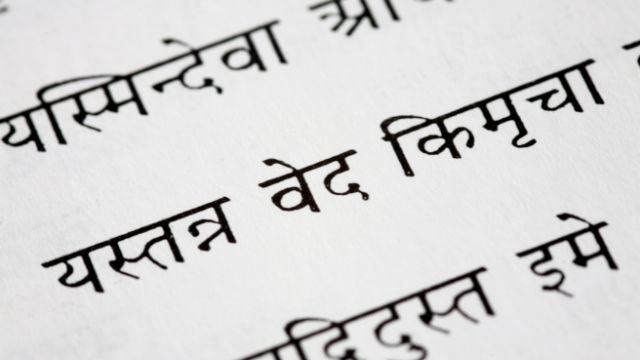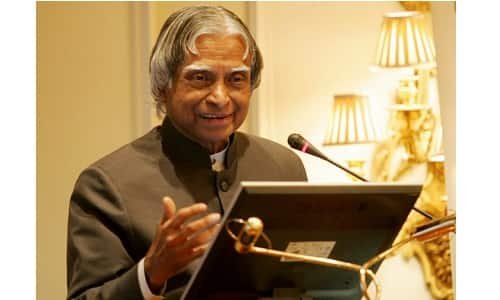In use today are 7,168 different languages. One-third of them are currently at risk. And of this third, many still have less than 1,000 speakers. We examine the top ten oldest languages in the world in 2023, each with its history and significance.
Oldest Known Languages in the World
| Rank | Language | Approximate Age | Region | Script |
| 1 | Sanskrit | Over 4,000 years | India | Devanagari |
| 2 | Tamil | Over 2,300 years | India, Sri Lanka | Brahmi Script |
| 3 | Chinese (Sinitic) | Over 3,000 years | China, Taiwan, Malaysia | Chinese Characters |
| 4 | Hebrew | Over 3,000 years | Israel, Jewish Diaspora | Hebrew Alphabet |
| 5 | Aramaic | Over 3,000 years | Middle East | Aramaic Alphabet |
| 6 | Greek | Over 3,000 years | Greece, Cyprus | Greek Alphabet |
| 7 | Egyptian (Coptic) | Over 4000 years | Egypt, Coptic Church | Coptic Alphabet |
| 8 | Persian (Farsi) | Over 3000 years | Iran, Afghanistan | Persian Script |
| 9 | Latin | Over 2,500 years | Ancient Rome | Latin Alphabet |
| 10 | Akkadian | Over 4,000 years | Ancient Mesopotamia | Cuneiform Script |
Most Ancient Language but Dead Now
We can claim that Sumerian is the oldest extant language in the world thanks to archaeological evidence. The first evidence of written Sumerian was discovered on an item referred to as the Kish Tablet in modern-day Iraq and dates to at least 3500 BC. As a result, given this evidence, Sumerian can also be regarded as either one of the ancient languages or the world’s first languages. About 2000 BC, Akkadian gradually supplanted Sumerian as a spoken language, but Sumerian remained employed as a ceremonial, literary, scientific, and holy language until the first century AD. Hurrian, Egyptian, Palaic, Akkadian, Hittite, Elamite, and Mycenaean Greek are some other extinct ancient tongues.
Top 10 Oldest Languages in the World
1. Sanskrit (Over 4000 years)
India’s classical language is Sanskrit, which has a 4000-year history. It has enormous cultural and religious significance and serves as the basis of many contemporary Indian languages.
The Upanishads, Vedas, and the epics Ramayana and Mahabharata are some of the oldest and most profound books in the world, and they were all written in Sanskrit due to their complex grammatical structure and extensive vocabulary. It has been essential to the growth of Indian mathematics, science, and philosophy.
Sanskrit is still taught and studied around the world despite no longer being a widely spoken language, and it continues to have an impact on a variety of facets of Indian culture, from dance to religious ceremonies and yoga to traditional music. Scholars and enthusiasts all across the world are continually inspired by its richness and timeless beauty.
2. Tamil (Over 2,300 years)
One of the oldest living languages in the world is Tamil, which has a history dating back more than 2,300 years. It is mainly spoken in Sri Lanka and southern India, especially in the state of Tamil Nadu. Tamil has a particular place in the hearts of those who speak it since it has a long literary history that dates back to the Sangam poetry of antiquity.
The Brahmi script was one of the earliest of the several scripts used for the Tamil language throughout history. It has been essential to the growth of Indian literature, music, and classical dance styles. Tamil has also served as a medium for the expression of its people’s cultural and aesthetic identity.
3. Chinese (Sinitic) (Over 3,000 years)
Chinese is one of the oldest and most diverse language families in the world, with over 3,000 years of history and several dialects. A testament to its extensive linguistic legacy is the hundreds of characters that make up the Chinese writing system.
China’s language has a vast and rich history that is closely related to it. Chinese is a dynamic and flexible language that has developed through numerous dynasties and cultural transformations. It has a significant impact on East Asian societies, particularly in Taiwan and Malaysia, where populations of Chinese speakers have flourished.
4. Hebrew (Over 3,000 years)
Hebrew, which has been spoken for more than 3,000 years, is among the oldest languages in the world because of its important significance in religious and cultural contexts. It is the language of Jewish religious literature and the Hebrew Bible (Old Testament).
Modern Hebrew, which was revived as a spoken language in the late 19th century, is spoken by millions of individuals worldwide and is the official language of Israel. Given that it was primarily employed for religious purposes for centuries, its revival is an impressive linguistic achievement.
The historical significance of Hebrew cannot be emphasized. It captures the spiritual and cultural history of the Jewish people, and its resurgence demonstrates the power of language to maintain identity and promote community among a scattered population.
5. Aramaic (Over 3,000 years)
With a history spanning more than 3,000 years, Aramaic formerly enjoyed prominence as the common tongue of the ancient Near East. From prehistoric Mesopotamia to the Levant, a large number of people spoke this Semitic language.
The importance of Aramaic is found in both its historical use and its association with significant religious and cultural writings. Aramaic is used in several sections of the Hebrew Bible, especially in the books of Daniel and Ezra. The New Testament also includes Aramaic phrases, illustrating the region’s linguistic variety at the time of Christ.
Aramaic is still used in liturgies by groups like Assyrian and Chaldean Christians even though it is no longer widely spoken as a daily language.
6. Greek (Over 3,000 years)
Greek culture has made enormous contributions to Western civilization throughout its more than 3,000-year history. The Greek alphabet was a revolutionary invention that served as the foundation for several contemporary alphabets, including Cyrillic, Latin, and Georgian.
Greek literature, philosophy, and science are well-known today. Greek was the language used by philosophers like Plato and Aristotle, poets of the heroic era like Homer, and mathematicians like Euclid. The New Testament was first written in Greek, which has contributed significantly to the growth of Christianity.
Greek is still a widely used language in Greece and Cyprus today, where it has a rich literary and cultural history. It continues to be a source of pride for Greeks throughout the world and is evidence of the lasting heritage of classical antiquity.
7. Egyptian (Coptic) (Over 2,000 years)
The history of Coptic, which is descended from ancient Egyptian, spans more than two thousand years. It has been mostly utilized for religious texts and liturgical reasons by the Coptic Christian Church in Egypt.
Coptic writing is distinctive because it incorporates certain hieroglyphic and demotic symbols along with some Greek alphabetic features. It was the means of disseminating significant religious writings and had a critical part in safeguarding Egypt’s Christian legacy.
Even though Coptic isn’t used as a first language by many people anymore, the Coptic Christian community is still working to preserve and revitalize it. The language still bears witness to Egypt’s lengthy heritage of culture and religion.
8. Persian (Farsi) (Over 2,500 years)
Iran’s official language is Farsi, commonly known as Persian, which has been used for over 2,500 years. With well-known poets like Rumi and Hafez making substantial contributions to world literature, it has a strong literary legacy.
The right-to-left written language of Farsi is a crucial component of Iranian culture. Over the years, Turkic, Arabic, and other languages have influenced it, enhancing both its vocabulary and structure.
Farsi is still widely spoken today, not just in Iran but also in Afghanistan and other Persian-speaking countries. Through its poetic beauty and historical depth, it connects people by bridging Iran’s ancient history and its contemporary aspirations.
9. Latin (Over 2,500 years)
With a history spanning more than 2,500 years, Latin has a unique place in the history of human civilization. It was the language of the Roman Empire and was essential to the growth of Western languages like Italian, Spanish, French, and English.
Latin was the official language of the Roman Empire, and it was also the language of literature and thought. Its influence can still be seen in scientific and legal jargon as well as in ancient works of literature like Virgil and Cicero.
Although it is no longer used as a first language, Latin is still used in the legal, religious, and academic fields as well as in academics. Its continued existence serves as a reminder of how influential Rome was on modern culture for a long time.
10. Akkadian (Over 4,000 years)
One of the earliest known Semitic languages is Akkadian, which has a history reaching back more than 4,000 years. It was the language of prehistoric Mesopotamia, which included the Sumerian, Akkadian, and Assyrian civilizations.
The usage of cuneiform script, one of the world’s oldest writing systems, is significant in Akkadian. Its most well-known literary works include the Epic of Gilgamesh, which was used for governmental, literary, and religious purposes.
Although Akkadian is no longer used as a language, its historical significance in understanding ancient Mesopotamian society cannot be overstated. Understanding the language can help you better comprehend the lengthy history of this centre of human civilization.
Conclusion
The heritage of these languages has survived the test of time and continues to influence cultures and societies today. Above are given the top 10 oldest languages in the world that stood the test of time.

Rahul Kumar is a passionate educator, writer, and subject matter expert in the field of education and professional development. As an author on CoursesXpert, Rahul Kumar’s articles cover a wide range of topics, from various courses, educational and career guidance.




